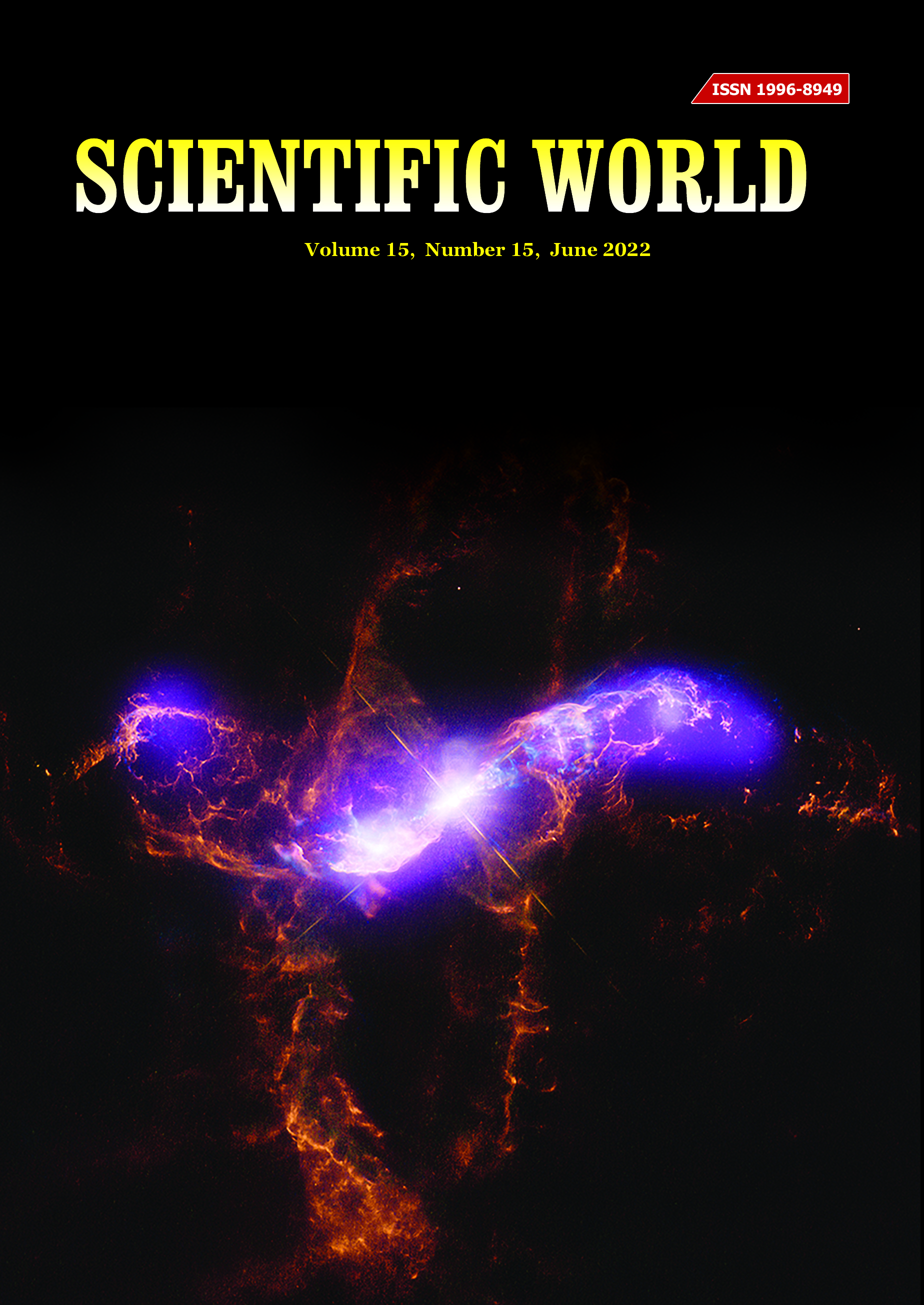Biogenic synthesis of copper oxide nanoparticles using aqueous rhizome extract of Rubus ellipticus for photocatalytic degradation of methylene blue
DOI:
https://doi.org/10.3126/sw.v15i15.45646Keywords:
CuO nanoparticles, Rubus ellipticus, Biomolecules, Photocatalytic degradationAbstract
In this paper, we have reported the synthesis of CuO nanoparticles (CuO NPs) by cost effectively and environmental friendly method using the rhizome extract of Rubus ellipticusfor photocatalytic degradation of methylene blue. The biomolecules present in the extract acts as reducing agent and stabilizer for the synthesis of CuO NPs. The synthesized nanoparticles were characterized by using the different analytical instrument like UV-Visible spectrophotometer, XRD and FT-IR. The absorbance at 595 nm indicates the formation of CuO NPs which on annealing at 400°C for four hours oxidizes and forms CuO NPs which shows maximum absorbance at 265 nm. XRD analysis confirms the formation of crystalline structured nanoparticles without any impurity. So formed nanoparticles were found to be of size 4.8nm and 5.7 nm which was calculated by using Debye-Scherrer equation. The FTIR confirms the presence of various bioactive components, which acts as reducers and stabilizer. In addition, the photocatalytic degradation activity of the CuO NPs was studied for the degradation of the methylene blue in presence of sunlight. The catalytic activity was monitored using the UV-Visible spectrophotometer. It was found that the dye gradually degrade sunlight irradiation. This study highlights the application of CuO NPs for photocatalytic degradation of dye which can be extended for the waste water treatment.




